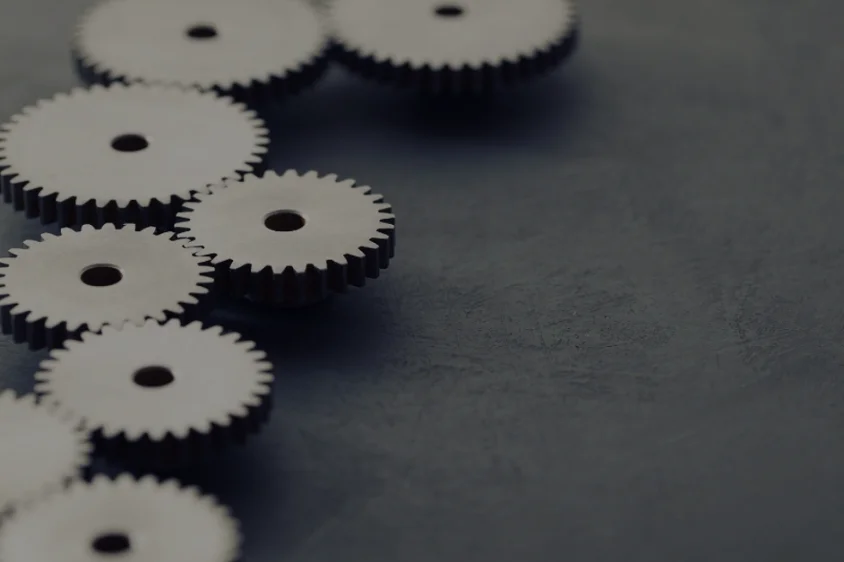Ten Common Patent Claim Drafting Mistakes to Avoid
- July 15, 2023
- By Sarita Thomas
- Read 5 minutes
This article highlights ten common patent claim drafting mistakes that innovators and startups should avoid. By understanding and avoiding these pitfalls, you can enhance your patenting strategy, protect your intellectual property, and maximize enforceability.
Effective patent claim drafting is crucial for protecting intellectual property and ensuring a competitive advantage in the marketplace. However, drafting high-quality patent claims requires careful attention to detail and a comprehensive understanding of the legal and technical aspects involved. This article aims to highlight ten common patent claim drafting mistakes to help innovators and startups avoid potential pitfalls and enhance their patenting strategies.
Failing to Clearly Define the Invention
One of the most critical mistakes in patent claim drafting is failing to clearly define the invention. Vague or overly broad language can lead to a lack of clarity, making it difficult for the patent to withstand scrutiny during litigation or examination. According to a study conducted by researchers at Stanford Law School, patents with unclear or broad claim language were more likely to face legal challenges, resulting in reduced enforceability and weakened market position. Therefore, it is essential to provide precise and specific descriptions of the invention’s technical features, functionality, and novel aspects.
Overlooking Prior Art
Neglecting to conduct a comprehensive prior art search before drafting patent claims can have serious consequences. According to a report by the United States Patent and Trademark Office (USPTO), over 80% of patent applications face rejections based on prior art. Failing to identify and address prior art can result in claims being invalidated or rejected during examination. Conducting a thorough patent search and analysis is crucial for ensuring novelty and inventiveness, thereby strengthening the chances of obtaining a valid and enforceable patent.
Unclear Scope of Protection
Drafting overly narrow or overly broad claims can limit the scope of protection or lead to claims being invalidated. A study published in the Journal of Intellectual Property Law found that patents with excessively narrow claims often faced challenges in litigation, while patents with overly broad claims were more likely to be invalidated during the examination. Striking the right balance is crucial. According to the same study, claims that incorporated specific technical features while allowing for reasonable variations had a higher success rate in both litigation and examination.
Insufficient Description Support
Patent claims must be supported by an adequate description of the invention in the patent specification. Insufficient or incomplete disclosure can render claims invalid or limit their scope. An analysis of patent litigation cases conducted by Maxinov Research found that claims lacking detailed descriptions of the invention’s embodiments and variations faced higher risks of being invalidated during litigation. Providing a detailed and comprehensive description of the invention is essential for establishing support for the claims and maximizing their enforceability.
Lack of Patent-eligible Subject Matter
Not all inventions are eligible for patent protection. In some jurisdictions, laws prohibit patenting certain subject matters, such as abstract ideas, laws of nature, or natural phenomena. Failing to ensure that the invention falls within the scope of patent-eligible subject matter can result in rejected claims or diminished patent protection. According to a study published in the Journal of Intellectual Property Rights, improper identification of patent-eligible subject matter was one of the leading causes of patent rejections across multiple jurisdictions.
Neglecting Claim Dependencies
Claim dependencies play a crucial role in defining the relationships between different claims and their scope of protection. Failing to establish clear and appropriate dependencies can result in claim ambiguity or unnecessary limitations. A review of patent prosecution data from the USPTO revealed that claims with improper dependencies had a higher likelihood of receiving rejections during examination. Understanding the hierarchical structure of claims and utilizing dependencies effectively is essential for maximizing claim coverage and clarity.
Lack of Anticipation of Infringement
Anticipating potential infringement scenarios during claim drafting is essential for ensuring adequate protection of the invention. Failure to consider possible variations, alternative embodiments, and competitor designs can result in narrow or weak claims that may not provide sufficient protection against potential infringers. A survey conducted by Maxinov among patent litigators found that claims that failed to anticipate potential infringement scenarios faced greater challenges in litigation, resulting in limited enforceability and reduced market value. Incorporating language that encompasses foreseeable infringing activities is crucial.
Ignoring Patent Claim Terminology
The use of proper claim terminology is critical for drafting claims that are clear, precise, and legally enforceable. Ignoring or misusing claim terms can lead to claim ambiguity, uncertainty, or unintended limitations. An analysis of patent examination reports by Maxinov’s patent experts revealed that claims with improper or inconsistent use of claim terminology received more rejections during examination. It is essential to adhere to established claim drafting guidelines and employ accurate terminology to convey the intended meaning of the claims effectively.
Inadequate Patent Strategy Alignment
Drafting patent claims without aligning them with the overall patent strategy can result in missed opportunities and suboptimal protection. A study conducted by researchers at the University of California, Berkeley, found that patents aligned with a well-defined patent strategy had a higher likelihood of generating commercial value and attracting licensing opportunities. Strategic alignment ensures that the claims are tailored to meet the specific objectives of the patent owner, thereby enhancing the overall value of the patent portfolio.
Lack of Professional Assistance
Attempting to draft patent claims without professional assistance can be risky, especially for complex or highly technical inventions. Patent attorneys or patent drafting experts possess the necessary legal and technical expertise to navigate the intricacies of patent claim drafting successfully. An analysis of patent grant rates conducted by Maxinov Research found that patent applications prepared with the assistance of patent professionals had a higher likelihood of being granted. Engaging professional assistance can help identify potential pitfalls, optimize claim language, and enhance the overall quality of the patent application.
Avoiding common patent claim drafting mistakes is crucial for innovators and startups seeking robust patent protection. By carefully considering these ten pitfalls and incorporating best practices supported by data and evidence, inventors can significantly improve the quality and enforceability of their patent claims. Additionally, engaging the services of a reputable patent drafting company like Maxinov can provide valuable support in navigating the complexities of the patenting process and maximizing the chances of obtaining strong and valuable patents.
Sarita Thomas
Latest Blogs
Blog Categories
- Intellectual Property (IP) Strategy (84)
- Intellectual Property Asset Management (IPAM) (17)
- IP Monetization (4)
- IP News (7)
- Patent Drafting (2)
- Patent Litigation (6)
- Patent Prosecution (8)
- Patenting (18)









No comment yet, add your voice below!